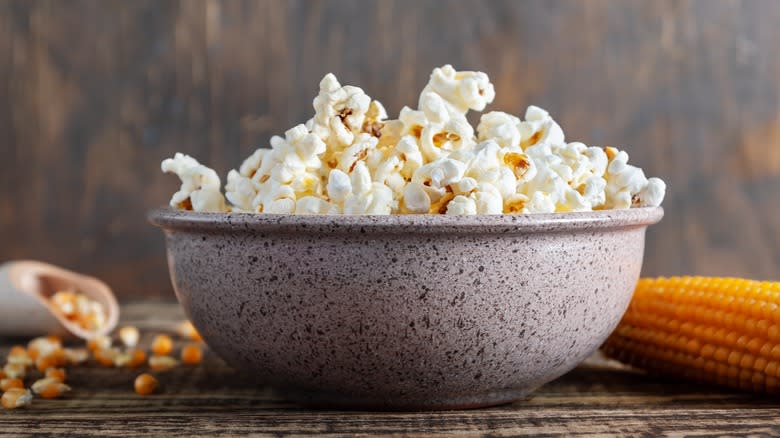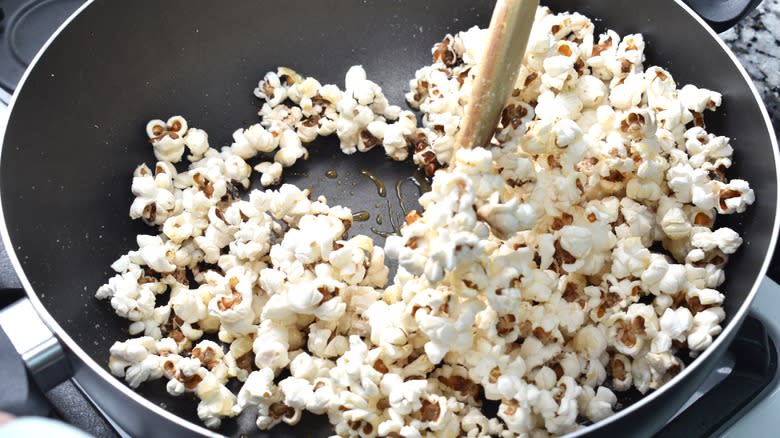The Best Type Of Oil To Use When Making Popcorn

It's no longer a tall order to make homemade popcorn taste as good as what's sold in the movie theater. By picking up and applying a few quick tips (like adding tamarind to caramel syrup for a sweet, tangy sauce), your homemade concoction will taste like a gourmet snack that will be everybody's choice come movie night. Still, getting the basics right is the first crucial step. When it comes to popcorn, that means finding the best oil for making it.
Whether cooking it on a stovetop or popping it in the microwave, you must use an oil with a high smoke point so the kernels get cooked enough to develop that delightfully fluffy yet crispy texture. According to research by the Journal of the Royal Society Interface, the ideal temperature at which popcorn should be cooked is 356 degrees Fahrenheit. This can be too hot for cooking oils and fats whose smoke points are at a lower temperature. Once a cooking oil or fat reaches this threshold, it begins to deteriorate and emit smoke, which gives food a burnt, bitter taste. Thus, oils with a 400 degrees Fahrenheit or higher smoke point are recommended. Two popular choices are canola and vegetable oil (both with a smoke point of 400 degrees Fahrenheit), thanks to their generally neutral flavor. Refined peanut oil (with a smoke point of 450 degrees Fahrenheit) is also recommended, especially if you like to infuse your popcorn with some of its nuttiness.
Read more: The 20 Best Olive Oils For Cooking
How To Use Oils And Fats With Lower Smoke Points

Speaking of flavor, although coconut oil and butter have low smoke points (both 350 degrees Fahrenheit) and aren't the best choices for making popcorn, they're great for adding flavor to popped kernels. In fact, tossing popcorn in flavored oil elevates its taste. Infuse coconut oil with herbs so it imparts intriguing savory notes that are different from the usual taste you get from a store-bought snack. Make some garlic butter from scratch and use it to coat your popcorn with its tasty creaminess. Chili oil is another atypical flavoring choice. Drizzle it over popcorn then squeeze some citrus juice as a finishing touch and enjoy a snack that wakes up your taste buds.
Since popcorn takes on any flavor you throw at it, cook it in duck fat for a richly delicious treat. Since duck fat's smoke point is 375 degrees Fahrenheit (quite close to the ideal popping temperature), use red kernel popcorn instead of the usual white or yellow kernels. Their smaller size lets them pop at a lower temperature, allowing you to lessen either the heat or the cooking time to avoid potentially burning the duck fat. They're also the crunchier variant so these modifications won't sacrifice that crispy texture you like. Sprinkle some grated Pecorino Romano, ground pepper, and sea salt flakes to enjoy the popcorn version of cacio e pepe. You can also coat it with caramel sauce for that mouth-watering play of saltiness and sweetness.
Read the original article on Tasting Table.

